Repair help
Leaf Blower Won’t Start? 11 Common Reasons and How to Fix
AZparts Team
Updated on July 30, 2025
8 min read
Your leaf blower won't start and you're not sure why? Don’t worry - this guide from AZParts has you covered. Whether you're dealing with a stubborn gas-powered blower or an electric model that refuses to turn on, we’ll walk you through the 11 most common reasons why your leaf blower won’t start and exactly how to fix each one. With expert tips and quality replacement parts from AZParts, you’ll get back to yard work in no time.

1. Common Reasons Your Leaf Blower Won’t Start
Below are the 11 most common reasons your leaf blower might not be working, along with practical fixes to get it running again.
1.1 Old or Bad Fuel
Gasoline begins to degrade after just 30 days, especially if it contains ethanol. Old or contaminated fuel can gum up the engine, making starting nearly impossible.
How to fix: If your blower has been sitting unused, drain the old gas completely. Refill the tank with fresh, high-quality fuel, preferably ethanol-free. For two-cycle engines, ensure you use the correct gas-to-oil ratio. Always store fuel in an airtight container to prevent moisture buildup.
1.2 Faulty Spark Plug
A spark plug is essential for ignition, and over time, it can become fouled with carbon or wear out.
How to fix: If your leaf blower won’t start, remove the plug and inspect it for buildup or damage. Use a wire brush to clean it, or replace it if the electrode looks worn. Also, check the spark gap, it should match the manufacturer’s specifications. Reinstall the plug tightly and test the engine again.
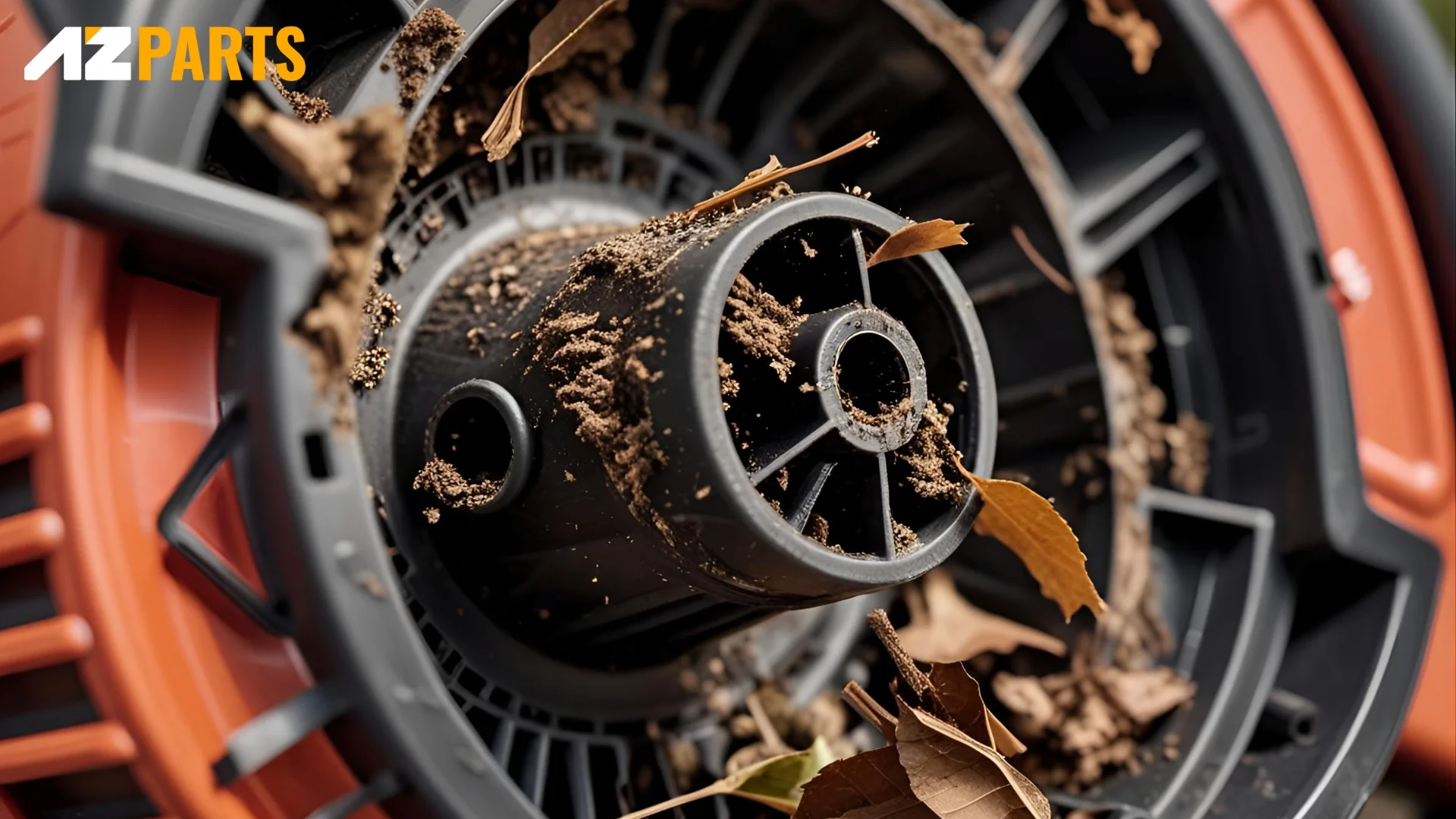
Remove the plug and inspect it for buildup or damage (Source: AZParts)
1.3 Dirty or Clogged Carburetor
A clogged carburetor disrupts the fuel-air mix, causing starting issues. Old fuel residue is often the culprit, gumming up small jets inside the carb.
How to fix: Try spraying a leaf blower carburetor cleaner into the intake to dissolve buildup. If that doesn’t work, remove and disassemble the carb for a full cleaning. In more severe cases, a carburetor rebuild kit or replacement may be necessary to restore function.
1.4 Blocked Air Filter
The air filter protects your engine from debris, but it can become clogged with dirt and oil over time. When airflow is restricted, your engine may sputter or refuse to start.
How to fix: Remove the leaf blower air filter and inspect it. If it’s just dusty, gently clean it with soap and water. Let it dry completely before reinstalling. If it’s damaged or soaked in oil, replace it with a new one.
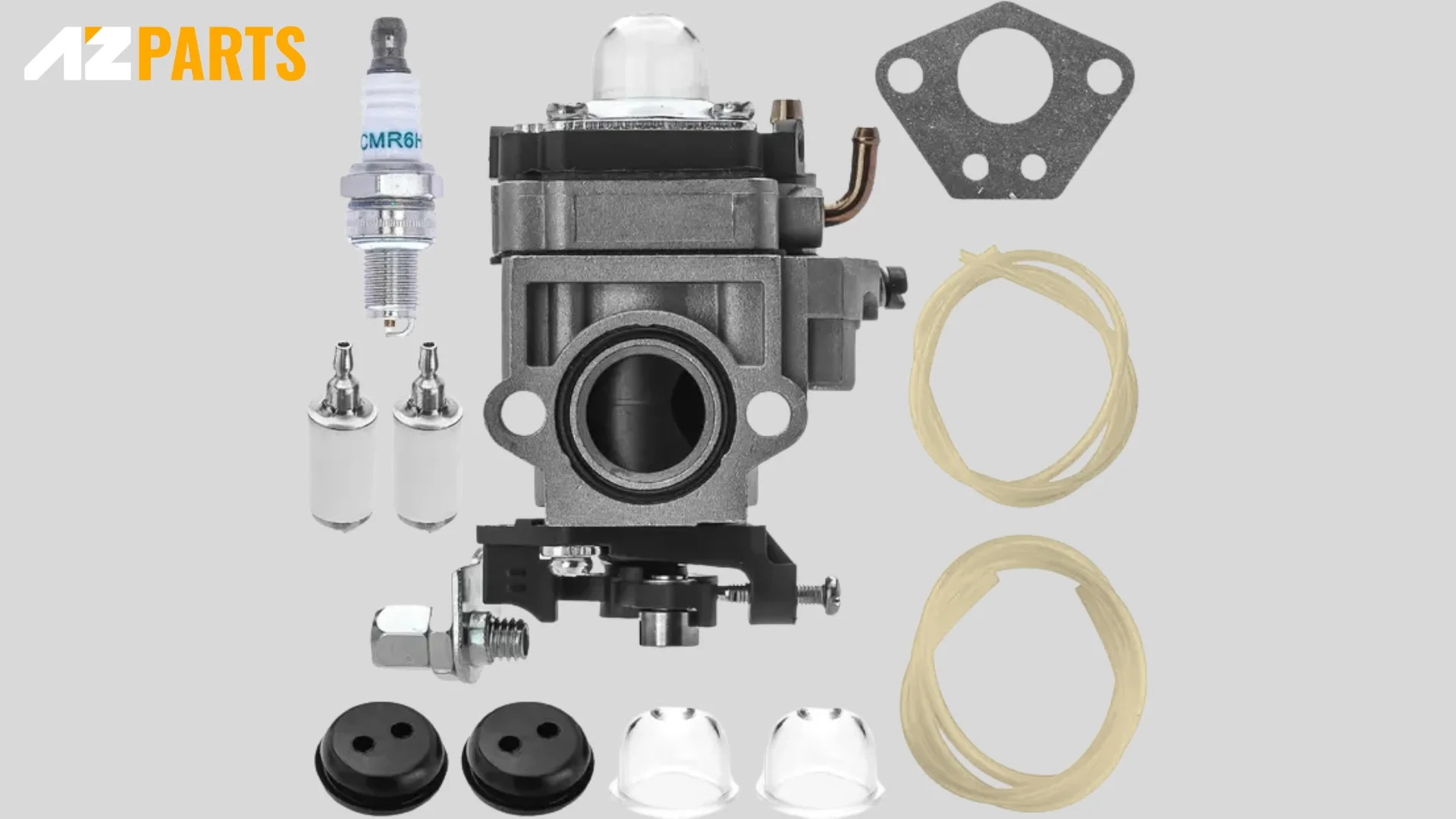
Remove the filter and inspect it (Source: AZParts)
1.5 Clogged Fuel Filter or Fuel Line
Fuel filters and lines can become blocked by debris or varnish from old fuel, interrupting the flow of gas. A restricted line means your engine won’t get enough fuel to start.
How to fix: Remove the fuel filter from inside the tank and inspect it for clogs. Replace it if necessary. Also, check the fuel lines for cracks, hardness, or leaks, and swap them out if damaged.
1.6 Broken Recoil Starter or Rewind Spring
If the starter cord feels loose or doesn’t retract, the recoil starter assembly may be faulty. The rewind spring could be broken, or the pulley system jammed.
How to fix: Open the housing to inspect the components. You can try recoiling the spring manually, but in most cases, replacing the leaf blower recoil starter is quicker and more reliable. A functioning starter mechanism is essential to turn the engine over.
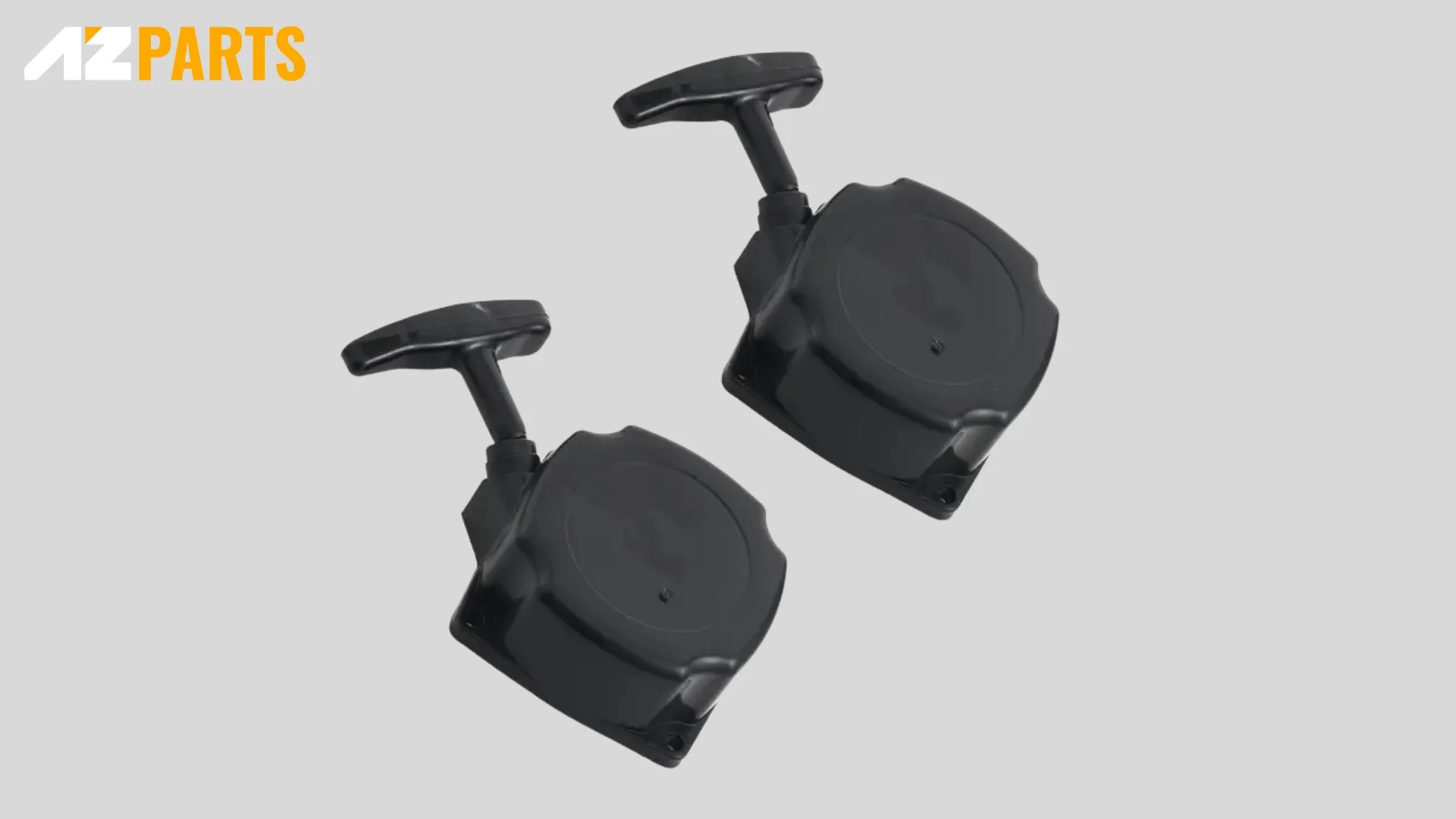
The rewind spring could be broken, or the pulley system jammed (Source: AZParts)
1.7 Faulty Ignition Coil or Flywheel Key
The ignition coil delivers voltage to the spark plug at the correct time. If it’s faulty, you won’t get a spark.
How to fix: Use an ignition tester to check for spark output. If there’s none, replace the leaf blower ignition coil. Also, inspect the flywheel key, which aligns the flywheel with the crankshaft. If it shears (often from sudden stops), your timing will be off. Replacing it restores ignition timing and allows the blower to start.
1.8. Clogged Spark Arrestor Screen
The spark arrestor screen prevents hot particles from escaping the exhaust but can clog with carbon over time. A blocked screen restricts exhaust flow, making the engine stall or refuse to start.
How to fix: Remove the muffler cover and clean the screen with a wire brush or solvent. Make sure it’s fully dry before reinstalling. Regular maintenance can prevent carbon buildup and improve engine performance.
1.9. Damaged throttle cable
If the throttle trigger feels loose or unresponsive, the cable may be stretched, frayed, or broken. A faulty throttle cable can prevent the carburetor from opening properly, limiting fuel flow.
How to fix: Inspect the cable along its full length. If damaged, replace it with the correct OEM part. In some cases, applying lubricant to the cable can help if it’s just sticky or stiff.
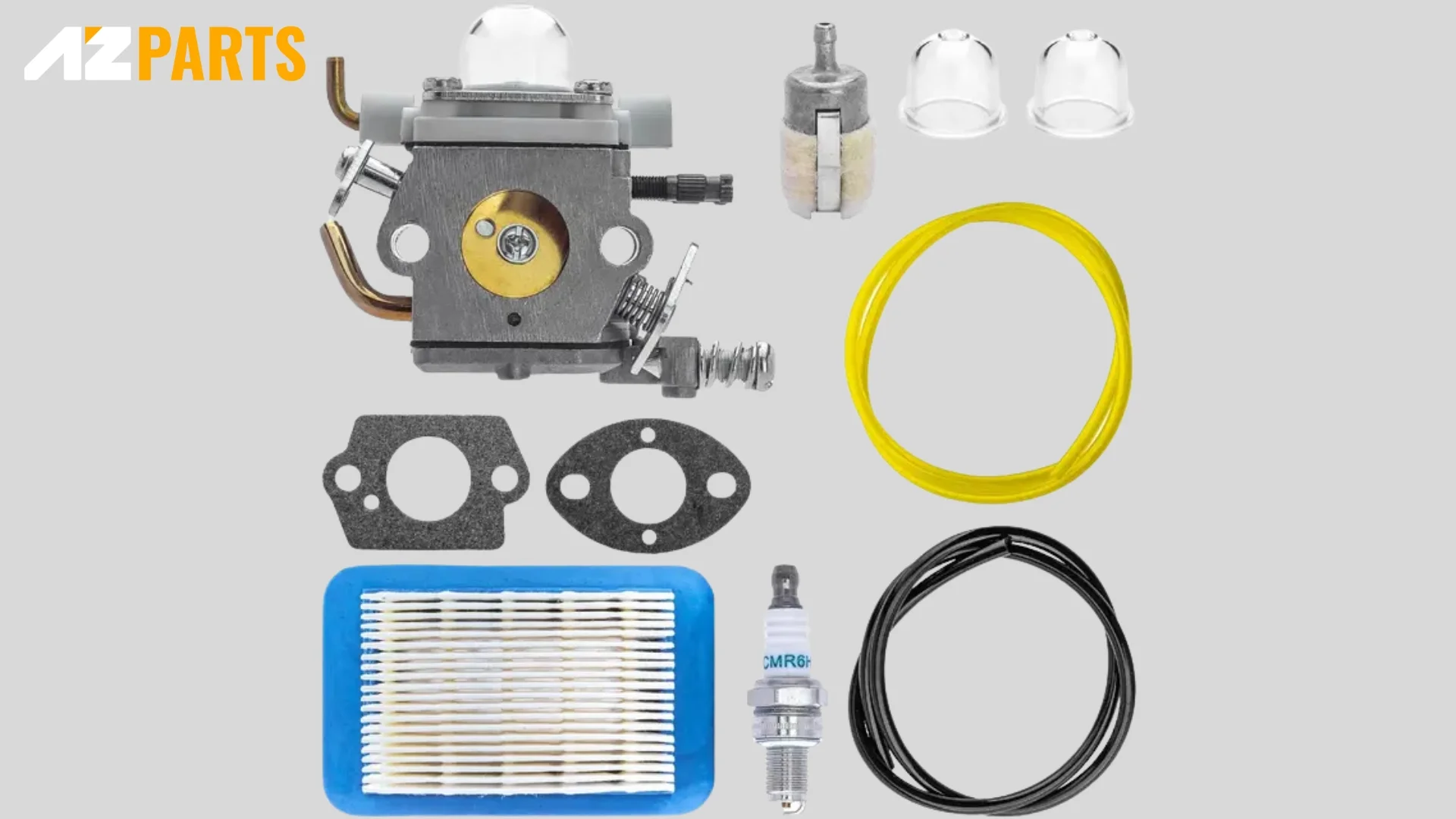
A faulty throttle cable can prevent the carburetor from opening properly (Source: AZParts)
1.10. Faulty on/off switch
Sometimes the issue is as simple as a bad kill switch. If your leaf blower is getting fuel and spark but still won’t start, the switch might be stuck or internally damaged.
How to fix: Use a multimeter to test for continuity. If the circuit doesn’t close in the “ON” position, replace the switch. Always ensure the switch is in the right position before starting.
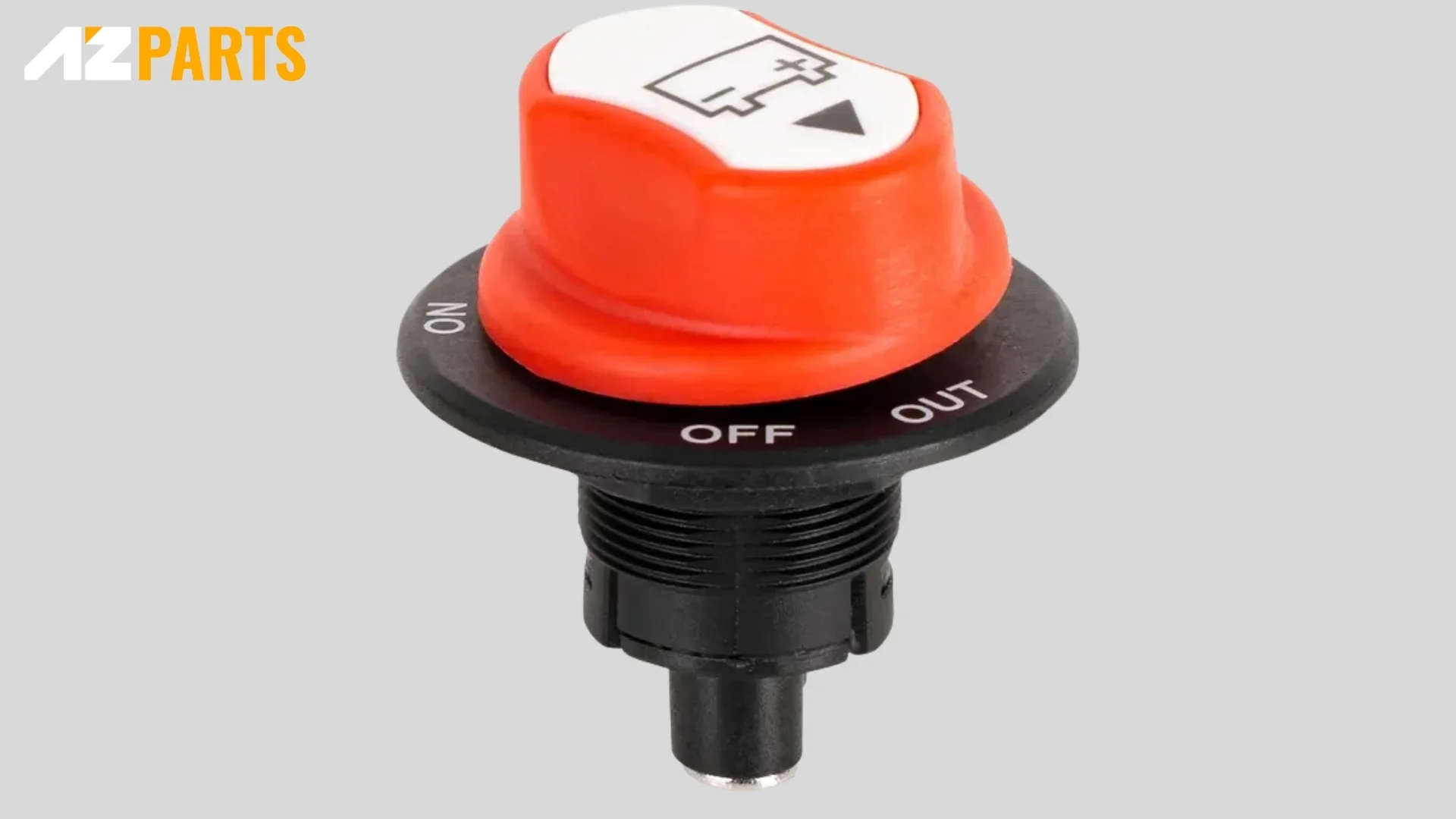
The switch might be stuck or internally damaged (Source: AZParts)
1.11. Broken fan blade
Though rare, a cracked or broken fan blade can throw the machine off balance and prevent proper operation. It may also cause the engine to bind or overheat.
How to fix: Inspect the impeller and fan for visible damage. If a blade is broken or warped, replace the entire fan assembly. Using the blower with a damaged fan can cause further damage to the engine.
2. Final Tips to Avoid Issues
If your leaf blower won’t start, follow this precise startup procedure to ensure proper ignition and avoid common user errors:
- Lock the throttle in the idle position.
- Press the primer bulb several times to fill the carburetor with fuel.
- Set the on/off switch to the ON position.
- Close the choke lever fully if the engine is cold.
- Place the blower on stable ground to prevent movement during startup.
- Pull the starter cord firmly until you hear the engine attempt to fire.
- Open the choke lever immediately after the initial firing sound.
- Pull the starter cord again until the engine starts completely.
- Allow the engine to idle for several seconds before applying throttle.
- If the leaf blower won’t start after these steps, check the fuel tank: refill if empty, or drain and replace old, degraded fuel with fresh gasoline.

Precise startup procedure to ensure proper ignition and avoid common user errors (Source: AZParts)
3. FAQs about Leaf Blower Won’t Start
3.1. What to do if a leaf blower won't start?
If your leaf blower won’t start, begin by checking the basics: make sure the fuel tank is filled with fresh gasoline, as old or degraded fuel is a common cause of engine failure. Inspect the spark plug for signs of wear, corrosion, or carbon buildup, and replace it if necessary.
Next, examine the air filter and carburetor—both can become clogged with debris over time and should be cleaned or replaced. Ensure the on/off switch is set to the correct position and that all fuel lines and primer bulbs are intact and functioning. A methodical check of these components usually reveals the problem and helps restore normal operation.
3.2. How to start a flooded leaf blower?
If your leaf blower is flooded, which happens when excess fuel prevents proper ignition, you’ll need to clear the engine before restarting. Set the choke lever to the “run” position (fully open), and hold the throttle wide open. Then, pull the starter cord several times in quick succession to push the extra fuel out of the combustion chamber.
If the blower still doesn’t start, remove the spark plug and pull the starter cord a few more times to vent any remaining fuel vapor. Allow the unit to sit for a few minutes to let any residual fuel evaporate, then reinstall the spark plug and attempt to start again.
3.3. How to tell if a spark plug is bad in a leaf blower?
A bad spark plug is a common reason why a leaf blower won’t start. You can usually identify a faulty spark plug by examining its tip, look for heavy carbon buildup, a cracked ceramic insulator, or worn electrodes.
Another clear sign is the absence of a spark when testing it against the engine block. If the engine is hard to start, misfires, or stalls frequently despite having clean fuel and a functional air system, the spark plug is likely the problem. In such cases, replacing the plug is a quick and inexpensive fix that often restores normal performance.
If your leaf blower won’t start, the solution is often simpler than it seems. From checking the fuel and spark plug to cleaning the carburetor or replacing a worn throttle cable, identifying the root cause can save you both time and money. With proper maintenance and timely part replacement, your blower will stay reliable season after season. For high-quality leaf blower replacement parts and expert support, AZParts is your trusted source, helping you keep your equipment running smoothly whenever you need it most.
Contact Info
Address: 8 The Green, Ste A, Dover, Delaware 19901-3618, United States
Email: support@azparts.com
leaf blower
- 1. Common Reasons Your Leaf Blower Won’t Start
- 1.1 Old or Bad Fuel
- 1.2 Faulty Spark Plug
- 1.3 Dirty or Clogged Carburetor
- 1.4 Blocked Air Filter
- 1.5 Clogged Fuel Filter or Fuel Line
- 1.6 Broken Recoil Starter or Rewind Spring
- 1.7 Faulty Ignition Coil or Flywheel Key
- 1.8. Clogged Spark Arrestor Screen
- 1.9. Damaged throttle cable
- 1.10. Faulty on/off switch
- 1.11. Broken fan blade
- 2. Final Tips to Avoid Issues
- 3. FAQs about Leaf Blower Won’t Start
Further Reading
Further Reading





